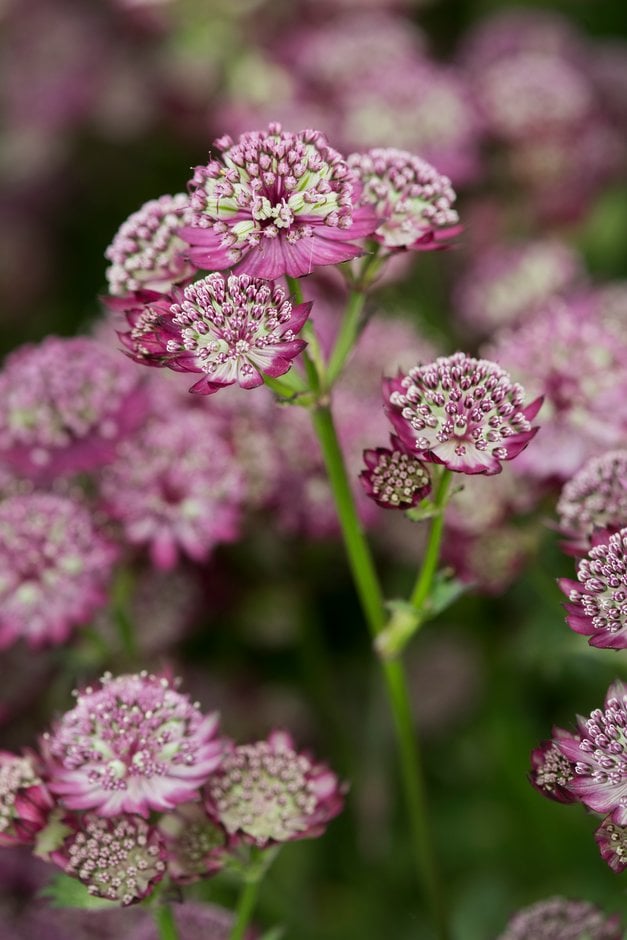Astrantia major 'Abbey Road'PBR
masterwort 'Abbey Road'
A clump-forming perennial to 80cm tall with deeply divided, coarsely-toothed dark green leaves. Upright, dark coloured stems bear umbels of deep reddish-purple flowers with white bases and surrounded by prominent bracts in summer
Size
Ultimate height
0.5–1 metresTime to ultimate height
2–5 yearsUltimate spread
0.1–0.5 metresGrowing conditions
Moisture
Moist but well–drained, Poorly–drainedpH
Acid, Alkaline, NeutralColour & scent
| Stem | Flower | Foliage | Fruit | |
| Spring | Green | |||
|---|---|---|---|---|
| Summer | Red Purple White | Green | ||
| Autumn | Green | |||
| Winter |
Position
- Full sun
- Partial shade
Aspect
North–facing or West–facing or South–facing or East–facing
Exposure
Exposed or Sheltered Hardiness
H7Botanical details
- Family
- Apiaceae
- Native to GB / Ireland
- No
- Foliage
- Deciduous
- Habit
- Bushy
- Genus
Astrantia are clump-forming herbaceous perennials with palmately lobed basal leaves and branched, erect, wiry stems bearing compact umbels of tiny flowers surrounded by a rosette of showy bracts
- Name status
Accepted
How to grow
Cultivation
Best grown in moist, fertile, humus-rich soil in sun or partial shade but will tolerate drier conditions
Propagation
Propagate by division in spring
Suggested planting locations and garden types
- Cottage and informal garden
- City and courtyard gardens
- Gravel garden
- Wildlife gardens
- Cut flowers
- Flower borders and beds
Pruning
Deadhead to prolong flowering
Pests
May be susceptible to astrantia leaf miner
Diseases
May be susceptible to powdery mildews
Love gardening
Sign up to receive regular gardening tips, inspiration, offers and more
View our Privacy Policy
Get involved
The Royal Horticultural Society is the UK’s leading gardening charity. We aim to enrich everyone’s life through plants, and make the UK a greener and more beautiful place.

